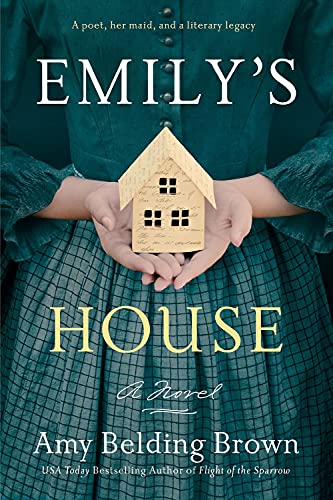Emily’s House
Vermont-based author Brown (Flight of the Sparrow; Mr. Emerson’s Wife) sets her latest novel in 19th-century Amherst, Massachusetts. Center stage: a big yellow house, the Homestead, now-famous home of poet Emily Dickinson (1830-86). We follow Miss Emily’s reclusive life through the eyes of Tipperary-born, Irish-immigrant Margaret Maher (1842-1924), hired as the Dickinson family maid by Emily’s crusty father, Edward, “The Squire.” “He had the air of a man who thinks saying something makes it so,” thinks Margaret. Additional characters include “Mother” Dickinson; Emily’s siblings, Vinnie and Austin; and others in Maggie’s family, including her brother Tom Kelley.
Initially, protagonist Maggie (the family’s nickname for Margaret) is unsure of the “peculiar” Emily, known about town as “the quare one,” “the Myth of Amherst.” “I never heard of a woman writing poems,” Maggie concedes. And, Maggie doesn’t know that her short-term position—accepted to make enough money to join a brother in California—will last for three decades. Gradually, “a change came in the way I saw Emily,” Maggie reminisces. She was “headstrong and fierce, full of secrets and schemes”; mischievous, with a “love of ridicule.” Over time, “a bond formed between us, mistress and maid. Thin as a thread it was at first, loose as a ribbon in the wind. But over time it grew sturdy and limber and strong.”
Brown offers a convincing window on the lives of late-19th-century Irish-American house servants. Some will prefer that less space was given to Maggie’s imagined relationship with Patrick Quinn—a wholly fictional character—allowing fuller development of known historical contexts and Dickinson herself, “more ghost than woman.” Still, Brown’s love of words is evident and unites her with the poet who scribbled, we know not when: “A word is dead / When it is said, / Some say. / I say it just / Begins to live / That day.”










